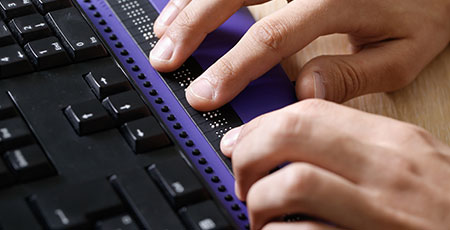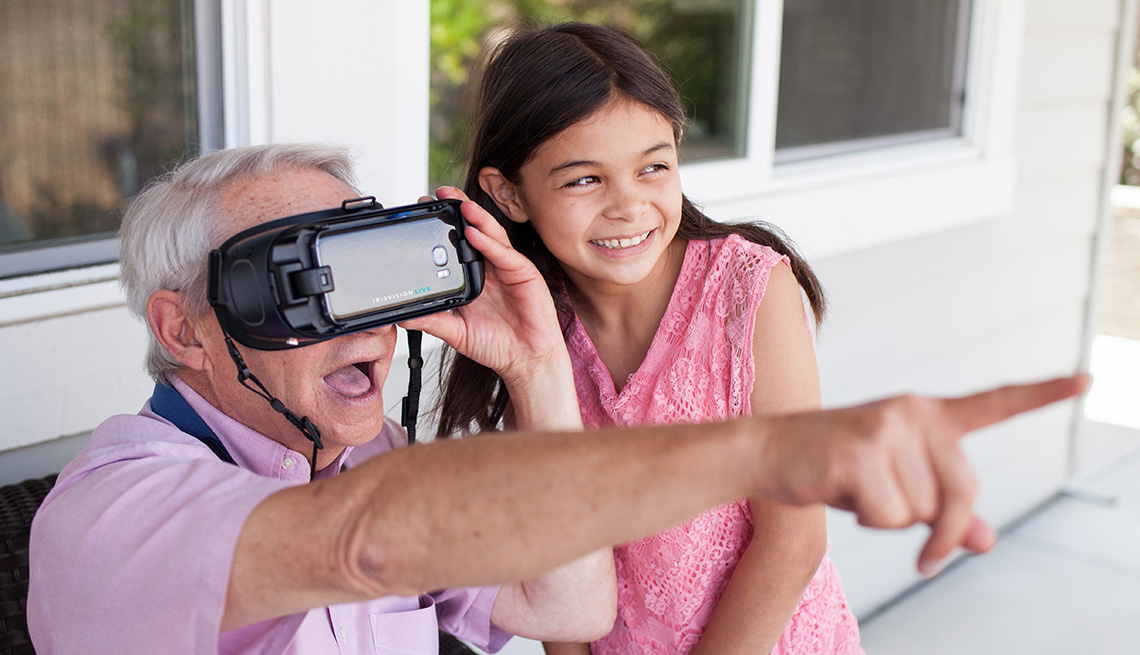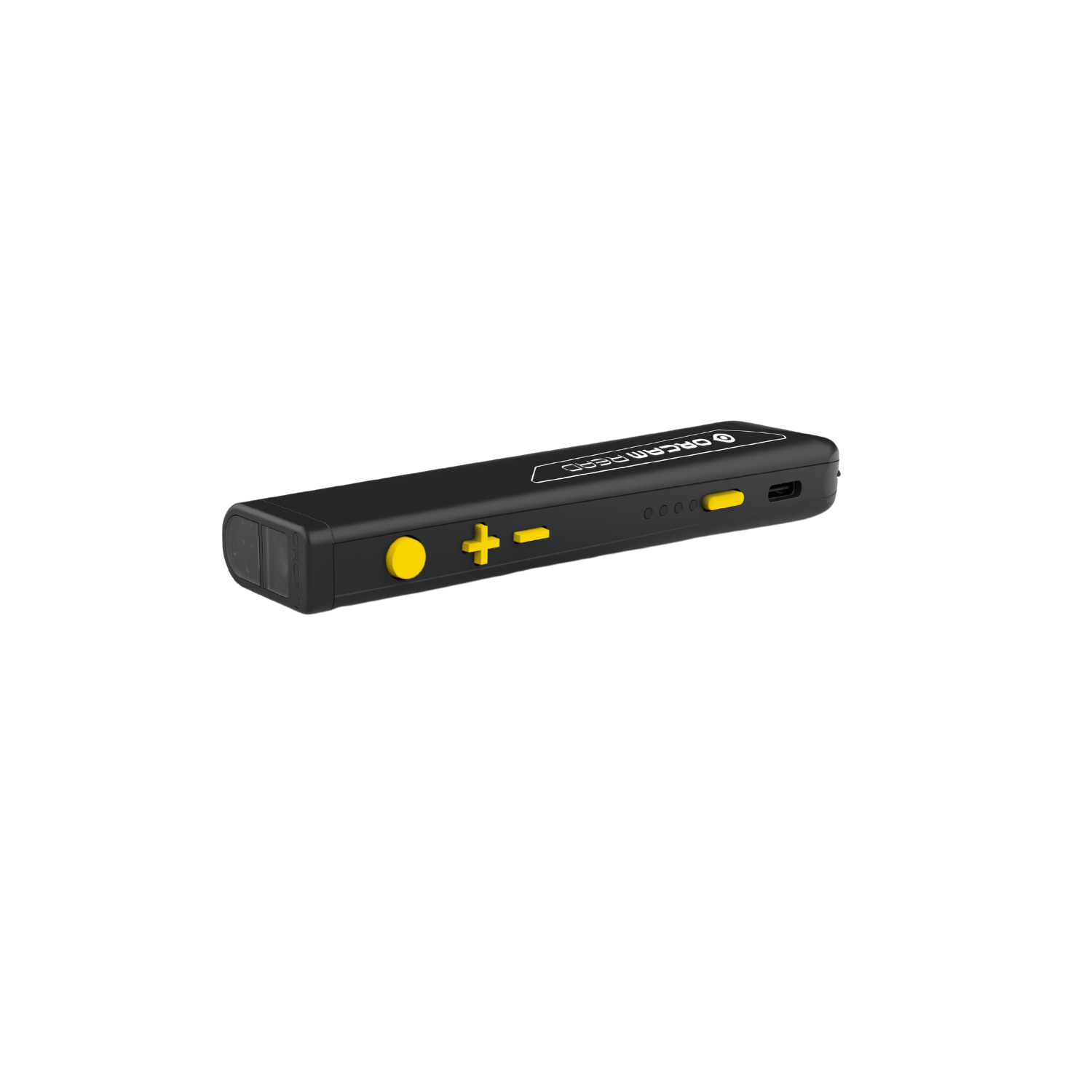OCR Devices for the Blind: Transforming Text into Speech with Ease
OCR Devices for the Blind: Transforming Text into Speech with Ease
Blog Article
Discover Innovative Devices Developed for the Aesthetically Impaired
The advancement of cutting-edge tools for the visually impaired stands for a considerable improvement in ease of access and freedom. Technologies such as smart glasses with AI capabilities and mobile applications developed to supply acoustic summaries are reshaping everyday experiences for individuals.
Smart Glasses for Navigating

Smart glasses designed for navigating are changing the means visually impaired individuals connect with their atmosphere. These advanced gadgets make use of a combination of electronic camera technology, artificial intelligence, and acoustic feedback to offer real-time details regarding environments. By using barrier discovery systems, smart glasses can alert customers to potential hazards, enabling more secure wheelchair in both acquainted and unknown setups.
The integration of GPS modern technology additionally boosts navigating abilities, allowing individuals to get auditory directions as they move. This hands-free method not just promotes self-reliance however also encourages visually impaired individuals to browse city landscapes with enhanced confidence. In addition, lots of clever glasses are furnished with attributes that recognize landmarks and street indications, providing contextual information that boosts the individual experience.
Moreover, the advancement of these devices is continually progressing, with firms functioning to boost the precision of object acknowledgment and increase the series of navigational features. As clever glasses end up being a lot more obtainable and economical, they hold the potential to substantially transform every day life for aesthetically damaged customers. Inevitably, these ingenious devices stand for a crucial action towards inclusivity, offering improved wheelchair and a better feeling of freedom for individuals browsing the world around them.

Mobile Application for Daily Living
Just how can mobile applications boost the every day lives of aesthetically damaged people? Mobile apps are changing the way aesthetically impaired customers navigate their settings, take care of everyday tasks, and accessibility information. These applications provide important assistance with various performances, cultivating self-reliance and enhancing high quality of life.
Numerous innovative mobile applications are made especially for daily living. Apps like Be My Eyes link visually impaired individuals with sighted volunteers using video telephone calls, permitting them to obtain real-time support with jobs such as checking out tags or navigating strange areas. Likewise, Seeing AI, established by Microsoft, utilizes expert system to describe environments, checked out message, and determine items, properly changing a mobile phone into an effective tool for daily support.
In addition, navigation applications customized for the visually impaired, such as Aira and BlindSquare, provide audio-based instructions and environmental details, making it possible for individuals to traverse their environments securely and with confidence. Beyond navigating and prompt help, mobile apps additionally support company and task monitoring, with attributes that aid individuals establish suggestions, create order of business, and track appointments. In recap, mobile applications work as essential resources, encouraging visually damaged people to lead more independent and fulfilling lives.
Wearable Technologies for Help
Empowerment via technology is increasingly obvious in the world of wearable gadgets made to help visually impaired people. These cutting-edge devices integrate flawlessly into life, boosting navigation and offering necessary feedback to individuals. For example, find out here now wise glasses geared up with video cameras can acknowledge faces and check out message aloud, enabling users to connect even more with confidence in professional and social setups.
One more remarkable innovation is using haptic feedback systems in wearable devices. These systems utilize resonances or various other tactile signals to convey info about the individual's setting, such as obstacles or adjustments in surface, boosting movement and security. Wearable innovations additionally consist of wristbands that connect to smartphones, alerting users to alerts via subtle resonances, thus get redirected here improving connection without reliance on aesthetic cues.
As these modern technologies continue to evolve, they are not only improving independence for aesthetically damaged individuals however additionally fostering a higher feeling of addition in culture. By connecting the gap in between difficulties dealt with in daily living and the possibility for freedom, wearable technologies offer as essential devices in the quest for equal rights and empowerment for those with aesthetic disabilities.
Sound Description Devices
Audio description devices play an important role in enhancing ease of access for visually damaged individuals, giving them with the capability to involve with aesthetic media. Smart glasses for the visually impaired. These devices provide narrated descriptions of vital visual components in movies, tv shows, and live efficiencies, ensuring that individuals can totally understand the context and feelings conveyed through visuals
Audio summary can be integrated right into different platforms, including streaming services, movie theater screenings, and live theater. Several preferred streaming services currently consist of audio summary as an access function, enabling viewers to choose it easily. Along with traditional media, specialized apps additionally exist, providing audio summaries for art events, museums, and other cultural occasions.
The effectiveness of audio summary hinges on the skill of the storytellers, who must communicate aesthetic information succinctly without diminishing the original audio. Advancements in this field are likewise leading the means for even more customized experiences, where individuals can adjust the level of detail and pacing according to their choices.
Braille Innovations and Devices
Braille developments and gadgets have actually considerably changed the means visually damaged people interact with message and information. Modern improvements have brought about the growth of versatile tools that improve literacy and independence amongst customers. Notably, Braille show modern technologies have advanced, permitting dynamic analysis experiences. These devices convert electronic text into Braille, making it possible for individuals to access a large variety of information on computers, tablets, and smart devices.
Moreover, portable Braille notetakers integrate standard Braille input with contemporary performances, promoting note-taking, scheduling, and paper modifying on the go. Voice-activated assistive devices. These portable devices often feature text-to-speech capacities, linking the space in my latest blog post between Braille and auditory info
Furthermore, cutting-edge Braille printers have arised, enabling users to create Braille labels, records, and academic materials successfully. This access fosters higher engagement in instructional and professional environments, eventually promoting inclusivity.
In addition, study into smart Braille technologies remains to increase. Gadgets that integrate synthetic intelligence are being explored to supply real-time navigation aid and contextual info, improving the customer experience in varied settings. On the whole, these technologies mirror a commitment to encouraging visually impaired individuals through technology, guaranteeing they can quickly accessibility and involve with the globe around them.

Verdict
The development of cutting-edge tools for the visually impaired significantly improves self-reliance and quality of life. Smart glasses, mobile applications, wearable technologies, audio description tools, and Braille innovations jointly empower people by offering necessary navigation aid, environmental recognition, and improved reading experiences. These technologies not only foster higher inclusion yet additionally advertise freedom in day-to-day tasks, eventually adding to a much more fair and obtainable culture for aesthetically impaired individuals. Proceeded development in this area holds guarantee for additional enhancements.
As clever glasses become more affordable and obtainable, they hold the potential to substantially transform everyday life for visually damaged customers. Mobile apps are changing the method aesthetically damaged individuals browse their environments, handle daily jobs, and accessibility details. Apps like Be My Eyes link visually damaged individuals with sighted volunteers through video telephone calls, allowing them to receive real-time assistance with tasks such as reading labels or navigating unknown spaces.Additionally, navigation apps customized for the aesthetically damaged, such as Aira and BlindSquare, supply audio-based directions and environmental details, making it possible for customers to traverse their environments safely and confidently.The innovation of innovative tools for the visually impaired dramatically boosts freedom and top quality of life.
Report this page